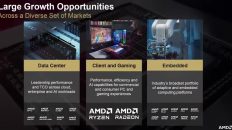Mentioned in Video:
- ARK Invest Innovation ETF (ARKK) – https://ark-funds.com/arkk
- ARK Invest Autonomous Technology & Robotics ETF (ARKQ) – https://ark-funds.com/arkq
- ARK Invest Next Generation Internet ETF (ARKW) – https://ark-funds.com/arkw
- The majority of this video is inspired by Simon Sinek's wonderful TED Talk, titled “How Great Leaders Inspire Action”: https://www.ted.com/talks/simon_sinek_how_great_leaders_inspire_action
- Malcolm Gladwell's book, The Tipping Point, which covers much of the same topics, is also an awesome resource: https://www.amazon.com/Tipping-Point-Little-Things-Difference/dp/0316346624/
- Gartner's Hype Cycle for Emerging Technologies 2020: https://www.gartner.com/en/newsroom/press-releases/2020-08-18-gartner-identifies-five-emerging-trends-that-will-drive-technology-innovation-for-the-next-decade
- Good article that connects the Law of Diffusion of Innovation with the Gartner Hype Cycle: https://blog.octo.com/en/accelerate-innovations-by-blending-the-best-practices-of-three-models-of-innovation-diffusion-gartner-g-a-moore-c-christensen/
- Support the channel and get extra member-only benefits by joining us on Patreon: https://www.patreon.com/tickersymbolyou
In this video, I look at one fundamental law #ARKInvest follows to pick innovative companies like #Tesla (#TSLA) way before Wall Street buys in. Their biggest portfolio, #ARKK, is filled with companies like these, and #ARK Invest's investment process is outlined here: https://ark-invest.com/investment-pro… Using Tesla as an example, we can clearly see that ARK bought in at the perfect time, not because they were timing the market, but because Tesla entered the trough of disillusionment and the market was clearly pricing #Elon‘s visionary electric vehicle company incorrectly. Wall Street cares about profit while #CathieWood understands that exponential growth tomorrow comes from constant reinvestment today. I'm talking about the Law of Diffusion of Innovation, which is a framework for understanding how many people need to buy into an idea or technology for it to go mainstream (e.g. buy-in from Wall Street). Tesla is ARK Invest's number 1 position by size and is number 1 in the following funds: ARK Invest Innovation ETF (ARKK) – https://ark-funds.com/arkk ARK Invest Autonomous Technology & Robotics ETF (ARKQ) – https://ark-funds.com/arkq ARK Invest Next Generation Internet ETF (ARKW) – https://ark-funds.com/arkw Finally, I talk about an additional framework, the Gartner Hype Cycle, which talks about market sentiments depending on where a technology is in its adoption cycle. I'm confident you can use this framework to validate any innovation or disruptive technology Cathie Wood puts money behind, as well as use it to predict her future picks!
I am not a financial advisor or affiliated with ARK Invest in any way.
Thanks for watching!
Video Transcript:
[00:00:00.180]
Hey there, Alex here, and welcome back to another episode of Ticker Symbol: You, the channel that invests in you. I wanted to make a quick video about one of the most important laws about how technology and price are related, because it's so fundamental to the way ARK not only picks their stocks, but times their picks. They say you can't time the market. And while that's true, you can definitely understand the timelines and the life cycles of the technologies that the market can invest in.
[00:00:26.130]
The law I'm talking about is the law of diffusion of innovation. This concept has been around since the early 1960s, but the first time I heard about it was actually in 2009 when I watched Simon Sinek's Great TED Talk called How Great Leaders Inspire Action. This is one of those TED Talks that really changed the way I view the world. I'll link to it in the description below, and I strongly encourage you to give it a watch. It's a great talk, take a look.
[00:00:50.360]
Something called the Law of Diffusion of innovation. And if you don't know the law, you definitely know the terminology. The first two and a half percent of our population are our innovators. The next thirteen and a half percent of our population are our early adopters. The next thirty four percent are your early majority, your late majority and your laggards. The only reason these people by touchtone phones is because you can't buy rotary phones anymore.
[00:01:18.240]
We all sit at various places at various times on the scale, but what the law of diffusion of innovation tells us is that if you want mass market success or mass market acceptance of an idea, you cannot have it until you achieve this tipping point between 15 and 18 percent market penetration. And then the system tips. And I love asking businesses, what's your conversion on new business? And they love to tell you, oh, it's about 10 percent, proudly.
[00:01:44.250]
Well, you can trip over 10 percent of the customers. We all have about 10 percent who just get it. That's how we describe them. Right. That's like that gut feeling. Oh, they just get it. The problem is, how do you find the ones that just get it before you're doing business with them versus the ones who don't get it? So it's this here, this little gap that you have to close. As Jeffrey Moore calls it “crossing the chasm”?
[00:02:04.710]
Because you see the early majority will not try something until someone else has tried it first. And these guys, the innovators and the early adopters, they're comfortable making those gut decisions. They're more comfortable making those intuitive decisions that are driven by what they believe about the world and not just what product is available. These are the people who stood on line for six hours to buy an iPhone when they first came out, when you could have just walked into the store the next week and bought one off the shelf.
[00:02:33.930]
These are the people who spent 40000 dollars on flat screen TVs when they first came out, even though the technology was substandard. And by the way, they didn't do it because the technology was so great. They did it for themselves.
[00:02:47.610]
So here's that same plot again. Let's talk about Tesla. Who are the earliest enthusiasts of Tesla? They're going to be the people who bought the Roadster back in 2009 and 2010. It's very easy to look back today and say the Roadster was the start of something big. But you have to remember the people who bought it in 2010 couldn't see what we know and love about Tesla today. And they were buying in on a vision.
[00:03:12.360]
And by the way, they didn't do it because the technology was so great. They did it for themselves.
[00:03:18.090]
The Model S was a well off machine, despite its flaws, from the beginning. But it's important to remember that the Model S could only exist because of all the technology that went into the Roadster first. As the technology matured, more and more people got access to it as the price started to decrease. Today, it's very clear that Tesla has crossed the chasm. I believe Tesla is somewhere in the beginnings of its early majority phase with the Model 3 and now the Model Y.
[00:03:44.250]
So this is an investment video, right? What does any of this have to do with investing? This is a chart from ARK Invest's “Investment Process” white paper. I'll leave a link in the description below for this as well. It talks about the time horizon of disruptive innovation. There's three key phases to this chart. On the X axis, of course, we have time. And on the Y we're talking about the number of units being sold of a given technology, for example, a electric vehicle.
[00:04:07.950]
In the beginning, you have your early adopters and when the stock is on the market, short term price movements often reflect volatility and near sighted decisions, more than the underlying value. For example, short sellers and short reports have an easy time manipulating the stock's price in this phase. As it moves from early adoption and into the mainstream market, investors tend to overestimate the impacts of short term events and underestimate long term market performance. Finally, as a product enters the main market, what we need to be focusing on as investors is to see if a company is reinvesting in future opportunities and future disruptors.
[00:04:44.940]
When a company reinvests in itself, it's fundamentally bad for its short term balance sheet. This is one of the major differences between ARK Invest and Wall Street analysts. Wall Street analysts care about things like profits. But ARK Invest understands that if a company wants to grow exponentially in the future, it needs to keep reinvesting in itself today. Investors overestimating short term performance while underestimating long term performance is because of two things. It's very hard for people to think exponentially.
[00:05:14.940]
So in the short term, it looks like a technology isn't making any gains at all, and in the long term it's made many more gains than we'd suspect. So one thing we can ask as investors is which companies ARK Invest thinks are about to cross the chasm? Here's a look at ARK's cluster of innovation platforms. The five biggest bubbles are their major pillars of disruptive innovations, and the smaller bubbles are the 14 disruptive technologies they think are spawning up as a result of some combination of those pillars.
[00:05:42.660]
There's actually a second law that's really useful to this conversation. When we talk about diffusion of innovation, we're talking about its adoption rate over time. But, there's also something called the Gartner “Hype Cycle”. The Gartner Hype Cycle tries to measure expectations. Remember, the market is all about pricing expectations. The dotcom bubble is an example of when expectations far outpaced reality. And that's what you're seeing here. The trough of disillusionment winds up with the chasm. Technologies cross the chasm when people stop being disillusioned with a technology that they were previously super hyped about.
[00:06:17.980]
If the technology never gets out of the trough, it'll never cross the chasm and it tends to fizzle while its competitors beat it to the mass market. If you take another look at ARK's chart, you can see that it's a combination of the law of diffusion of innovation and the Gartner hype cycle because they're measuring both the rate of adoption and investor expectations. Gartner is a technology research firm, and one of the documents that they put out regularly is a part of all of the current emerging technologies onto the Gartner Hype Cycle.
[00:06:45.150]
Let's take a look at what the hype cycle for emerging technologies looked like in 2014 when ARK was founded. You can see that a lot of the things that ARK Invest invests in today is on the Gartner hype cycle in 2014. In fact, a lot of them are near the peak of inflated expectations. You can see smart robots, autonomous vehicles, the Internet of Things, crypto currencies, enterprise 3D printing and even cloud computing near the bottom of the trough of disillusionment.
[00:07:13.830]
So ARK Invest sees this as an opportunity. They saw a lot of stocks in companies with technologies that were near the peak of inflated expectations. So they got ready to invest in these technologies before they were ready for prime time. Remember, you may not be able to time the market, but you can certainly time when in a technology life cycle, you choose to invest in it. Investing in a technology right when it hits that trough of disillusionment is a good time because as expectations fall, so do prices.
[00:07:42.330]
Out of curiosity, let's take a look at the 2020 Gartner hype cycle. As you can see, there are many A.I. technologies near the peak of inflated expectations. What this means for the future of A.I. stocks, no one can guess. But if you see them getting beat up in the market, it might be a good time to do more research. So just to recap, the law of diffusion of innovation covers how many people will have to buy into an idea or a technology before it becomes mainstream.
[00:08:07.170]
The very first people that buy in are the enthusiasts followed by their early adopters. If enough people adopt a technology early, it crosses the chasm and hits the major market, the major market being the early majority and the late majority and then the laggards. The Gartner hype cycle is the second part of this law. The hype cycle is a measure of sentiment as the technology matures. People tend to overestimate a technology in the short term, while drastically underestimating it in the long term, because we think things grow in lines, but really they grow exponentially.
[00:08:39.670]
ARK Invest understands these laws deeply and that's why they're always outpacing Wall Street when it comes to finding the right companies to invest in. While Wall Street is focused on profits and balance sheets, ARK Invest understands that the companies that will dominate the market tomorrow are the ones reinvesting in their growth today. So in a nutshell, one of the ways that ARK Invest picks its stocks is by following the law of diffusion of innovation. This is Ticker Symbol: You. My name is Alex, reminding you that the best investment you can make is in you.
If you want to comment on this, please do so on the YouTube Video Here














